Thousand of red ants ( Solenopsis invicta ) created a life-saving raft by intertwining their limbs and jaws.
The sense of community of fire ants
This is a colony of fire ants living under a water feature in the backyard of a house in Texas. As the water level begins to rise, the colony is seen gathering their young and banding together before being swept over a waterfall and into a pool.

The ants they are known for their collective social behavior in large colonies. When they try to swim, however, their kicks actively repel each other. Despite this repulsion, fire ants in groups of 10 or more are forced together by a phenomenon called the “Cheerios effect,” which is caused by surface tension.
This occurs when small objects, such as cheerios in a bowl of milk, create a concave indentation on the surface of the liquid that brings nearby objects together into groups.
Red ants exploit this phenomenon to protect their queen. The larvae, pupae, and worker ants are brought together, then interlock their legs and jaws to form a large raft that dips slightly in the center. Then they place the queen on top, sitting safely in the center of this huge raft.
The fire ants’ nest was found while they were scouting locations in the yard for filming. The explorers turned on a water feature in a pool, unaware that a colony of fire ants lived inside. Fire ants then flooded the pool.
Bill Markham said he recorded this intricate behavior with the help of Drexel University entomologist Sean O’Donnell, using “macro lenses, two-tier housings and super slow motion.” Although the team did not count how many ants were part of the raft, Markham said “there were easily 5,000 on this occasion” and to their surprise, they found that the ants were collecting trapped air bubbles to keep the raft at afloat and remain floating.
The fire ants, banding together to protect their queen, create a structure that “would take 400 times their body weight to break,” Markham said. He added that these rafts can stay afloat for 12 days, but in this case they found a pool and managed to reach land within minutes.
The fire ant is commonly found under stones and logs in gardens, but also in soil and lawns. It is active year-round, but winged adults swarm in late summer during hot, humid weather; these “flying ants” mate and eventually disperse to form new colonies.
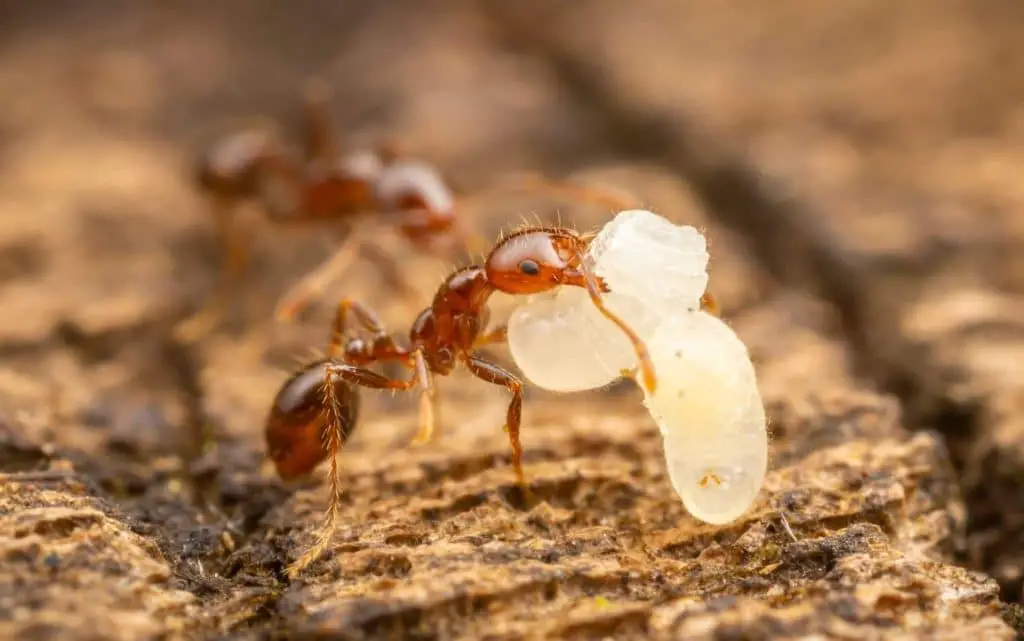
True to its name, the fire ant has a reddish-brown body and a darker head. It is a medium sized ant. Fire ant workers have a surprisingly painful sting and attack if disturbed.
Our gardens are a vital resource for wildlife, providing corridors of green space between open countryside, allowing species to move. In fact, the UK’s gardens offer more space for nature than all the National Nature Reserves combined.
So why not try planting native plants and trees to attract birds, mammals and invertebrates to your garden?
Fire ants are native to South America. They were first observed in Brisbane in 2001, probably after hitchhiking on a ship docked at the Port of Brisbane.
They are small ants, about 2-6 mm and extremely aggressive. They swarm when disturbed and not only hitchhike on ships, but have also been known to get transported on mulch and trucks. Sometimes they even make rafts out of their own bodies to float along the waterways!
Copper brown in color with a darker abdomen, you may see fire ants of various sizes in the same nest. Most queens could fly up to 2 km before building a new nest. But some queens can move up to 30 km when flying and have favorable winds.
Fire ants pose a very real threat to people and livestock. Fire ant encounters usually involve dozens or hundreds of ants and they swarm. Their sting is extremely painful, especially when they bite all together. They have killed people (due to anaphylactic shock after being bitten) in the United States, removed livestock from infested paddocks, and decimated entire native ecosystems.
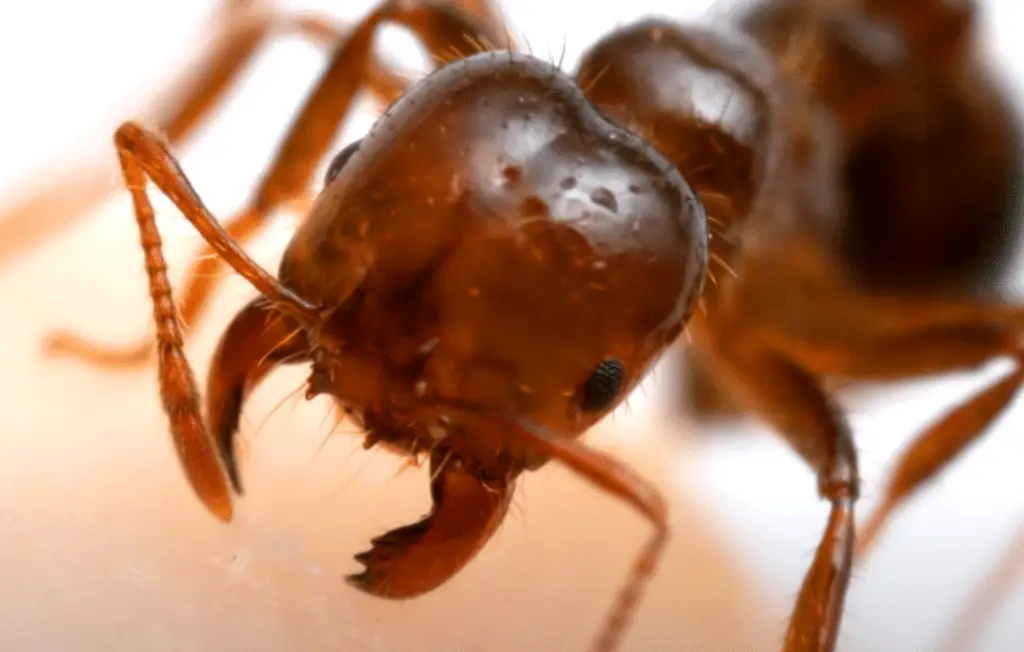
They are considered one of the worst invasive species in the world and although the DPI and the National Fire Ant Eradication Program in Australia are working to control these pests, they have crossed the NSW-QLD state border and have been found as far away as Ballina on the coast southern. NSW North Coast in early 2024.
We must now make quick and decisive decisions to eradicate this pest from south-east Queensland so it cannot spread further and impact our lives in the future.
Fire ants can build super colonies with multiple queens and millions of ants. Their nests look like mounds of dirt and you may find them on lawns, curbs, flowerbeds or in brush.
Not all fire ant species are fire ants, and not all are red in color. In fact, most ants aren’t actually red. They are various shades of brown. True fire ants have a red or reddish-brown appearance and belong to the Solenopsis genus.
Red imported fire ants (RIFA) are the most common fire ants in the United States. They are believed to have entered the country from South America through the port of Mobile, Alabama in the 1930s. Legend has it that they arrived here in the ballast tanks of ships where the earth was used for stabilization. Since their introduction, this invasive species has infested the territory of 15 southeastern states.
Tropical fire ants have also invaded new territories via sea routes and are almost identical to the RIFA variety. However, the heads of tropical fire ants are larger and more square in shape. Unlike many ant species, tropical fire ants live in the ground and are most commonly found in dry coastal areas of Hawaii and the southern United States.
Southern fire ants, also known as desert or California ants, are also found throughout the American South. The red version prefers a desert climate and its mounds are smaller and looser in shape than other varieties. The southern fire ant is most commonly encountered in the arid regions of Texas, New Mexico, Arizona, and California.
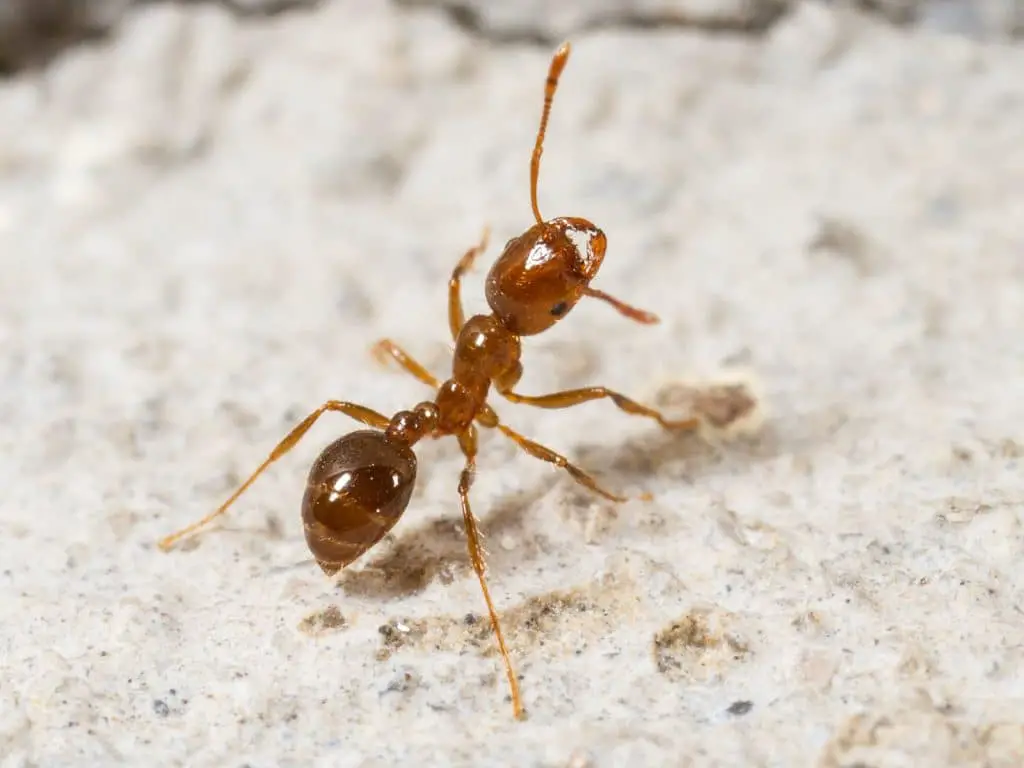
Other fire ant species can be confused with fire ants due to their reddish-brown appearance and some similar characteristics.
Carpenter ants can reach a size of five-eighths of an inch. Most fire ants only reach a quarter of an inch. They are often found on trees and plants or near easy indoor food sources, such as pet bowls or sugar spills.
Along with other ant species, swarms of carpenter ants are also sometimes mistaken for termites, due to their appearance and the fact that they build colonies in wooden structures and trees.
Tawny crazy ants are a relatively new species in North America, but they are quickly gaining dominance in the areas where they are currently found. Researchers at the University of Texas at Austin have found that tawny crazy ants have begun wiping out RIFA colonies and taking over their territory.
Velvet ants are actually members of the wasp family. Some species have red bands and the female velvet ant is wingless, so their appearance can be similar to fire ants. Although the sting of a velvet ant can be painful, these “ants” are not known to be aggressive.
Which fire ants are dangerous?
Unless they are the fire ants mentioned above, fire ants are generally more annoying or destructive than dangerous. For example, carpenter ants are probably more interested in food that you have spilled or left behind.
Although carpenter ants don’t eat wood, they nest in it. They can cause damage to wooden structures in the process of creating the tunnels they use for nesting.
Tawny crazy ants have no stingers, but they can bite. Although their bite is light, an encounter can be unnerving as they tend to swarm chaotically.
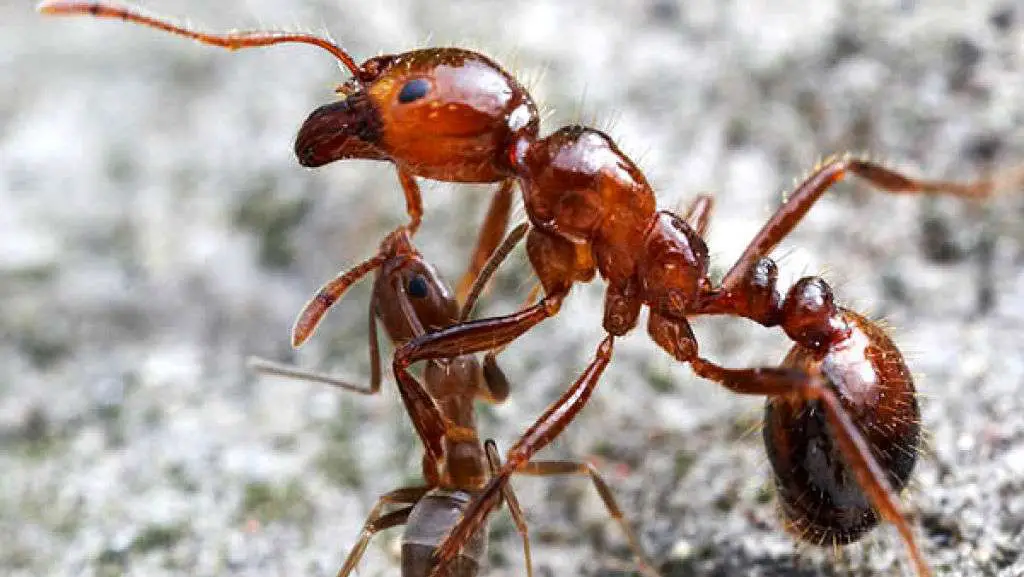
They are more likely to alarm you by invading places where you wouldn’t normally expect to find ants. Tawny crazy ants are known to build colonies in strange places like pipes, car engines and computers, and sometimes to short out electronic devices. Once they move out, it can be very difficult to get rid of them.
Fire ants, particularly RIFAs, will defend themselves by biting and stinging if they feel threatened, and their stings can be both painful and dangerous. When these large red ants sense a threat, they may respond by crawling onto the victim to investigate the disturbance.
Once the person realizes that ants are crawling on him and reacts by brushing them off or something similar, the ants will likely perceive this as a threat and begin biting and stinging the victim. Each fire ant is also capable of stinging multiple times.
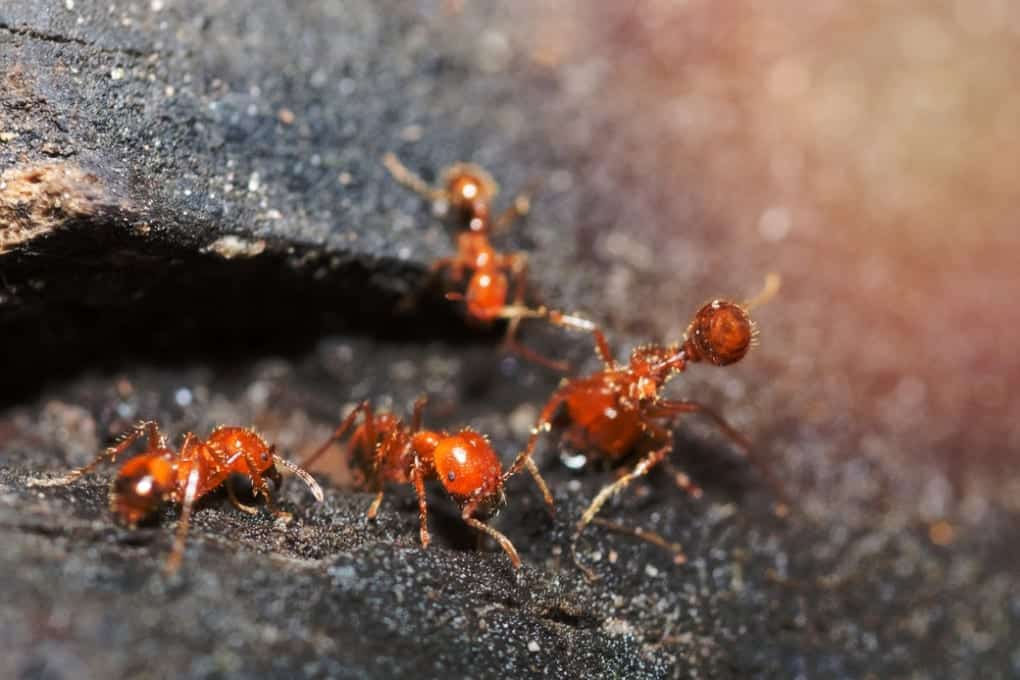
About 1% of the population is hypersensitive to ant venom, and for some of these individuals, ant stings can cause fatal allergic reactions. Victims who are young, elderly, or have a suppressed immune system are more likely to experience a severe reaction. Even healthy individuals are at risk of suffering anaphylactic shock if stung multiple times.
Avoid coming into contact with fire ants whenever possible. Red ant mounds can reach 60 cm in height and are often found in sunny areas of meadows, pastures, parks and fields. Mounds can also be present in rotten logs, around stumps and trees, and sometimes under homes and other buildings.
Regardless of the species, fire ant colonies can quickly get out of control in your home or surrounding area. Terminix® offers professional services and long-lasting solutions tailored to your pest control situation.
#red #ants #create #raft #bodies #save #colony #queen